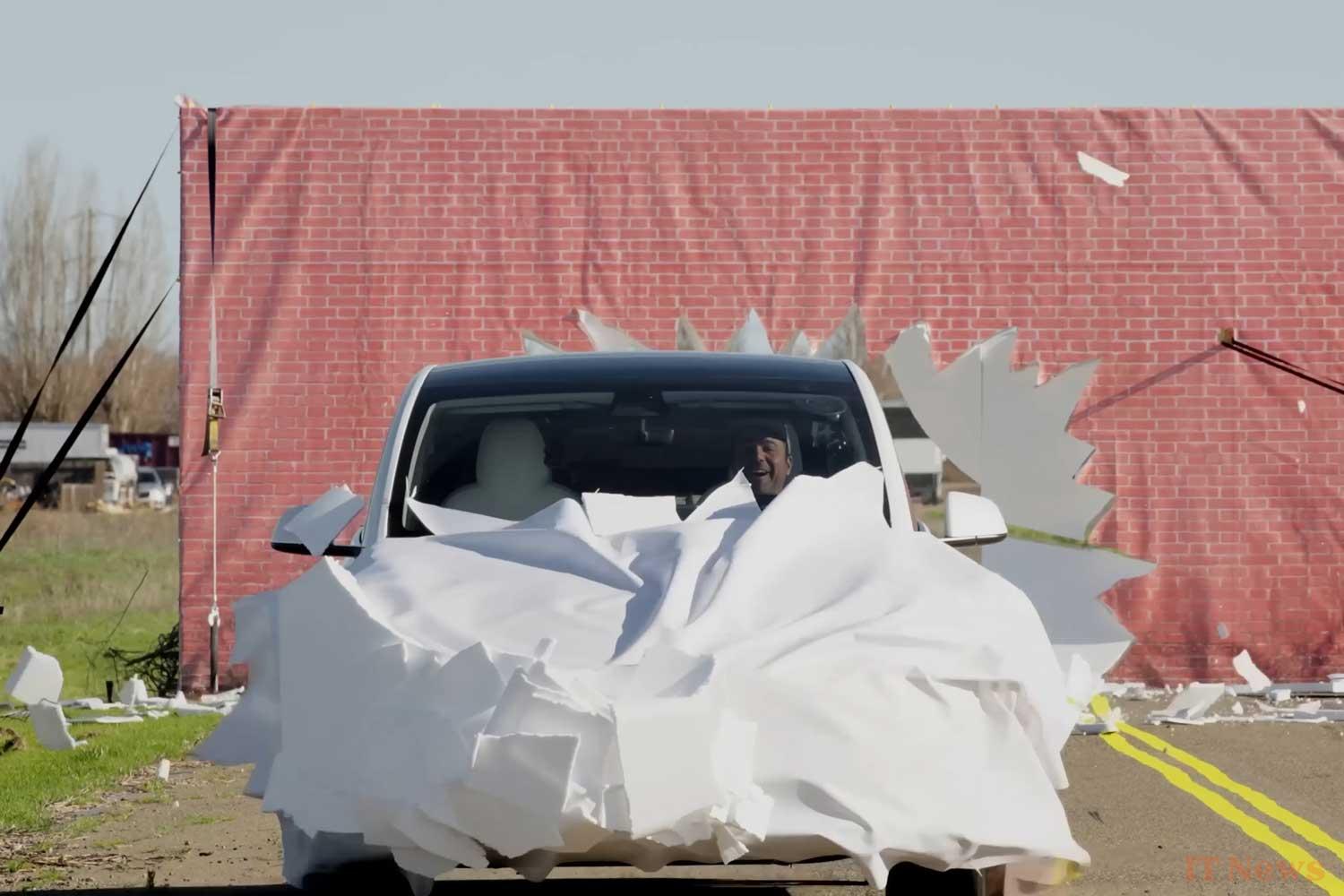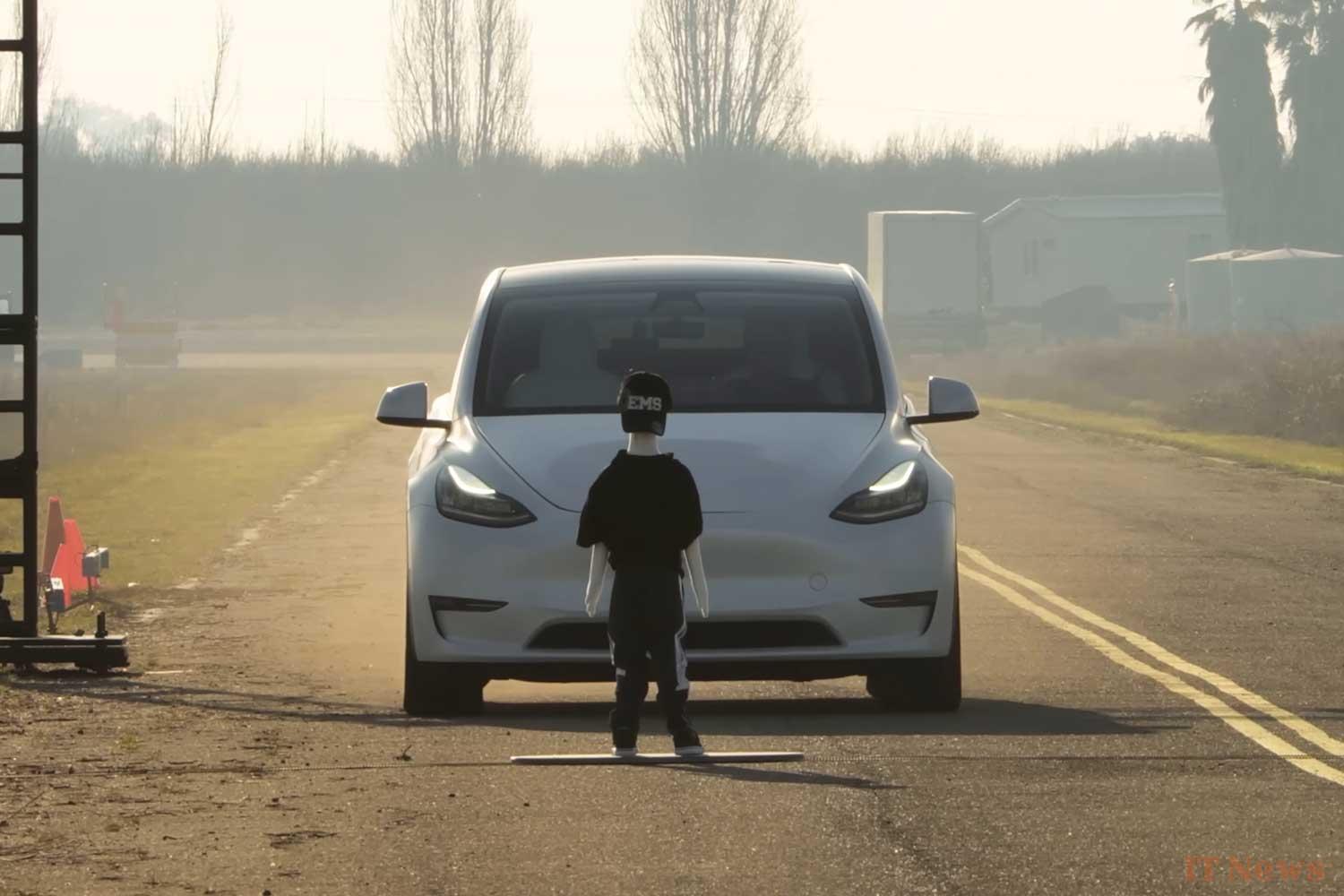Tesla's semi-autonomous driving system, Autopilot, has contributed to the rise of Elon Musk's company. Its development takes time, and Mark Rober's latest experiment doesn't necessarily reassure Tesla about the path chosen for its technology. The engineer and YouTuber compared the performance of a Tesla Model Y equipped with Autopilot to that of a car equipped with LiDAR (Light Detection and Ranging) technology. Unlike most manufacturers who use a combination of sensors (cameras, radars, LiDAR), Tesla has chosen to rely solely on cameras and a computer vision system. A simpler solution that didn't survive was a fake wall, painted to give the impression that it was a continuous road.
A trompe-l'oeil painted wall is enough to fool a Tesla
The project is reminiscent of the adventures of Vil Coyote from the Looney Tunes series and raises some questions about Tesla's approach to autonomous driving. The experiment is not limited to the trompe-l'oeil painted wall (starting at 14 min 13 s) and totals six tests to compare the performance with LiDAR of a Tesla equipped only with cameras.
In addition to the painted wall test, Elon Musk's car struggles in fog and heavy rain. Under normal conditions, the Tesla also performs well in detecting and avoiding obstacles on the road, such as a child's dummy or a child appearing behind a parked car.
Here are the conclusions for each test:
| Vehicle equipped with LiDAR | Tesla | |
| Test 1: Child dummy on the road | Successful detection and stopping at about 200 meters (60 feet) away at 65 km/h (40 mph) | Dummy detected but braking too late in normal mode, successful stop in Autopilot mode |
| Test 2: Child appearing from behind a parked car | Stop in time | Stop in time |
| Test 3: Thick fog | No detection problem | Failure, does not stop in time and hits the child |
| Test 4: Heavy Rain | Difficulty seeing the child in heavy rain, stops just in time | Can't see the child from the start of heavy rain, can't stop |
| Test 5: Bright Lights | Effective detection despite glare, stops in time | Difficulty of reliable detection under these conditions, stopping on time |
| Test 6: trompe-l'oeil wall | Detection and stopping on time |
Why doesn't the Tesla see the wall?
The Tesla has multiple cameras to interpret a 2D environment and then estimate distances using algorithms. A LiDAR system uses lasers to scan in 3D and physically measure obstacles, regardless of their appearance. In this test, the LiDAR vehicle is not interested in the appearance of the wall and detects the physical structure of the wall, while the cameras only "see" a continuous road. The device in Teslas is therefore more vulnerable to illusions and is less comfortable as soon as it can no longer truly "see" the environment. This explains the problems encountered during thick fog or pouring rain.
Elon Musk defends the absence of LiDAR in his cars
The Tesla boss has already explained the absence of LiDAR and defends a "vision-only" approach, arguing that a human drives solely using vision and that AI should be able to do the same. In reality, humans combine several elements that cameras lack, such as experience, context, and other senses, such as hearing.
While the debate rages that LiDAR has significant advantages, it would be unfair to characterize Tesla's approach as a failure. Elon Musk explained a few years ago that LiDAR was "expensive, ugly, and useless," referring to its high cost and bulk. "In my opinion, it's like a crutch that will give manufacturers maximum comfort from which they won't be able to escape. Maybe I'm wrong and I'll look like an idiot." But I'm pretty sure of myself," he explained in 2018. Instead, the billionaire close to Donald Trump believes that advances in artificial intelligence will be enough to allow vehicles to "understand" and interpret camera data accurately and reliably.
Last year, a Chinese manufacturer, Xpeng, proved Elon Musk's vision right by ignoring LiDAR technology. Faced with this video, which has rekindled the debate, Tesla could well have the last word in the long term, and that wouldn't displease its boss. It will still be necessary to convince the most skeptical, and this will undoubtedly involve level 5 autonomous driving on Teslas. Elon Musk has been saying for years that he's close to reaching this level of full autonomy, but Teslas are generally considered Level 2 cars.
See also: Things are going badly for Tesla in Europe: what's going on?




0 Comments